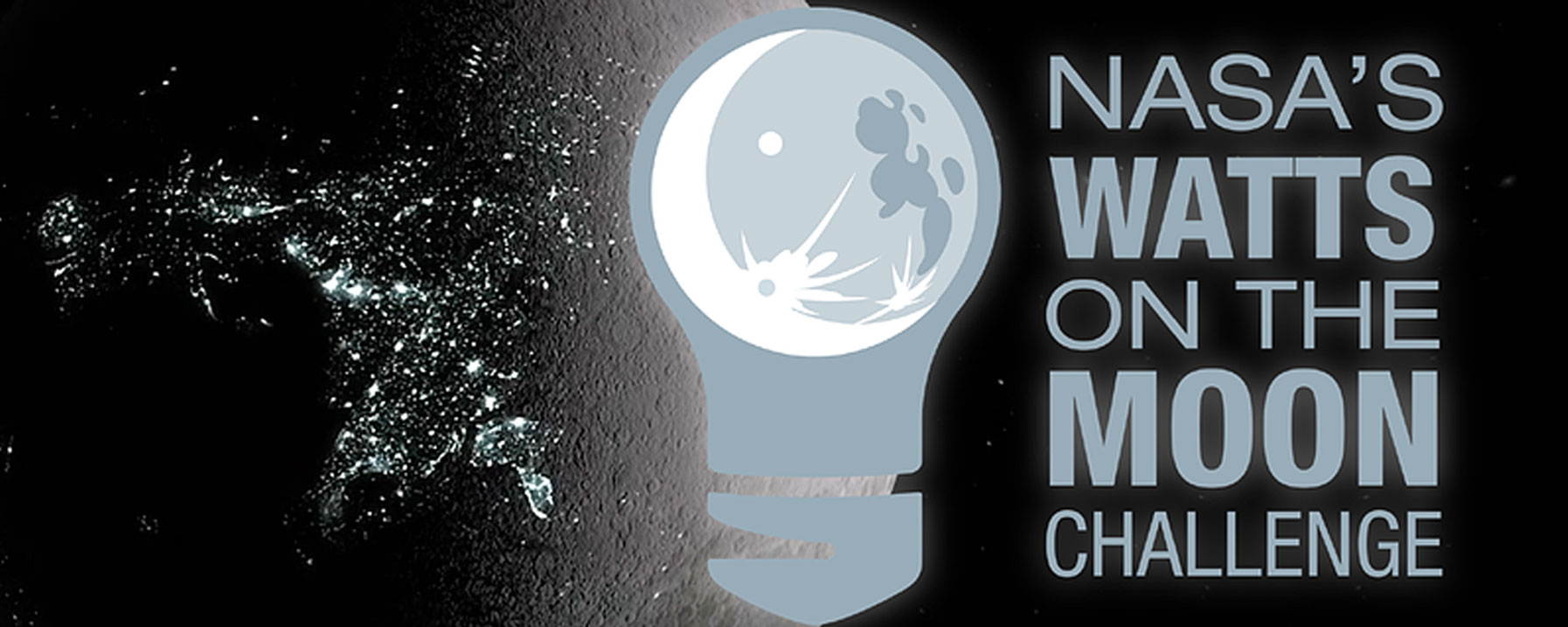By Savannah Bullard
NASA has selected four teams to advance to the final level of the agency’s Watts on the Moon Challenge, which seeks solutions to transmit and store energy on the lunar surface.
NASA is working to establish a permanent human presence on the Moon and beyond. The next major step in this effort will be Artemis II, the first crewed test flight to the Moon since the Apollo program. Long-term exploratory missions on the Moon will require many technologies, such as lunar habitats, life support systems, and rovers – all of which need efficient sources of power.
Providing power on the Moon is a complex challenge. Because of the particulars of the Moon’s orbit, the lunar night lasts nearly two weeks, creating long periods of extreme darkness and cold temperatures. For humans to live and work on the Moon for an extended period of time, solutions for storing, distributing, and managing energy for use throughout the lunar cycle are essential. Watts on the Moon challenges teams to come up with new technologies to address these areas.
“As we tread new ground in exploration, we’ll need to draw on creativity across the nation,” said Denise Morris, acting program manager for Centennial Challenges at NASA’s Marshall Space Flight Center in Huntsville, Alabama. “The technologies created through Watts on the Moon are one example, with new perspectives helping us address a crucial technology gap.”
Phase 2, Level 2, of the challenge began in August 2022 and tasked teams to further develop key components of solutions developed in Phase 2, Level 1. The Level 2 winning teams were awarded $400,000 each and will advance to Phase 2, Level 3.
The winning teams are:
- Electric Moon (Ohio State University in Columbus, Ohio) – The university team held a demonstration in March 2023 at Ohio State University, where they laid out a 6-kilometer cable in an open field to emulate a transmission line, then successfully transmitted power through the cable with an energy load large enough to support a television and sound system. Their solution will use this model, combined with modular, multilevel power conversion, to transmit energy across the lunar surface.
- High Efficiency Long-Range Power Solution(University of California, Santa Barbara in Santa Barbara, California) – The academic experimental cosmology group designed a solution that can operate within a wide temperature range, opening the possibility to seamlessly employ power distribution and energy management through lunar days and nights. Their current goal is to cull any unnecessary weight from the fully implemented solution in order to achieve optimal efficiency.
- Michigan Technological University Planetary Surface Technology Development Lab(Michigan Technological University in Houghton, Michigan) – The alumni/student group initially began exploring lunar power management through their participation in the 2020 NASA BIG Idea Challenge, where they suggested using adapted rovers to navigate the uncertain terrain and deliver power via a battery system. After winning the Artemis Award in that competition, they regrouped and took their proposal a step further by creating TEMPEST (Tethered Mechanism for Persistent Energy Storage and Transmission), which uses a power management system and battery storage hub to connect power infrastructure elements using updated rover designs.
- Orbital Mining Corporation(Space technology startup in Golden, Colorado) – The space technology startup is working to bring energy distribution to the Moon by creating a DC-to-DC converter system that can make it through the cold darkness of a sunless lunar night. Their high-voltage system, which operates using a direct current wired transmission system and a lithium-ion battery bank, will need to mitigate vacuum arcing to ensure long-term success.
Each team’s technology was evaluated by subject matters experts from government and industry, including the Department of Energy. NASA sent observers to each team’s site to validate data and assess performance in the spring of 2023. These visits were similar to what’s typically expected in an engineering critical design review. This included reviewing the maturity of their respective designs, evaluating whether the prototypes could withstand intensive physical and technological trials, and identifying any remaining risks associated with the hardware. Advancing from Level 2 indicates that the teams are well-prepared to test their prototypes in a simulated lunar environment.
The simulation will occur in the final level, planned for 2024, where each team’s technology will be placed inside a vacuum chamber that mimics the frigid temperature and absence of pressure found at the permanently shadowed regions of the Lunar South Pole. The chamber will serve to test the technology of each team’s design while troubleshooting and mitigating any issues that could occur in possible future use on the Moon. The top two teams will split a prize purse of $1.5 million, bringing the total prizes for all phases of the challenge to $5 million.
The Watts on the Moon Challenge is a NASA Centennial Challenge led by the agency’s Glenn Research Center in Cleveland, Ohio. NASA Marshall manages Centennial Challenges, which are part of the agency’s Prizes, Challenges, and Crowdsourcing program in the Space Technology Mission Directorate. NASA has contracted HeroX to support the administration of this challenge.
For more information on NASA’s Watts on the Moon Challenge, visit:
Jonathan Deal
Marshall Space Flight Center, Huntsville, Ala.
256-544-0034
jonathan.e.deal@nasa.gov






























